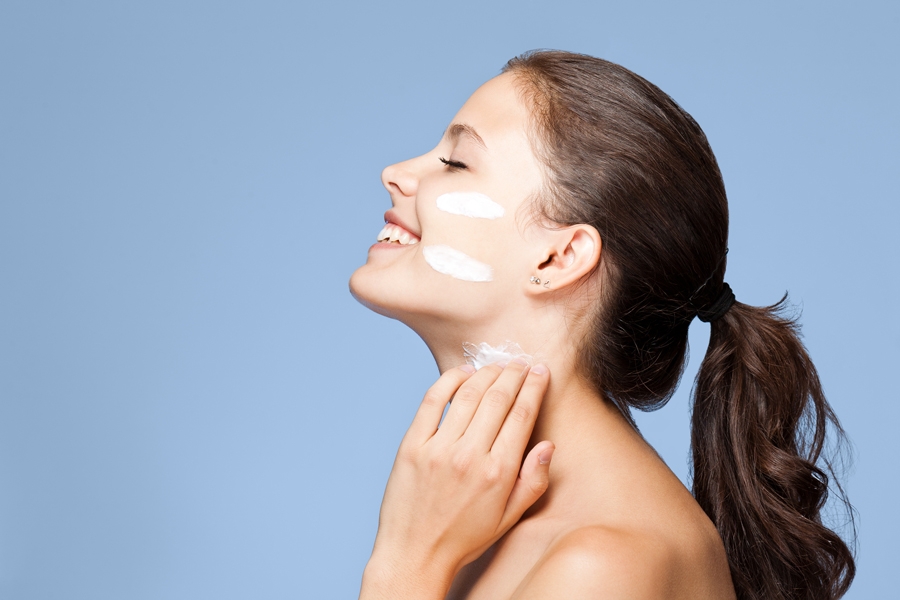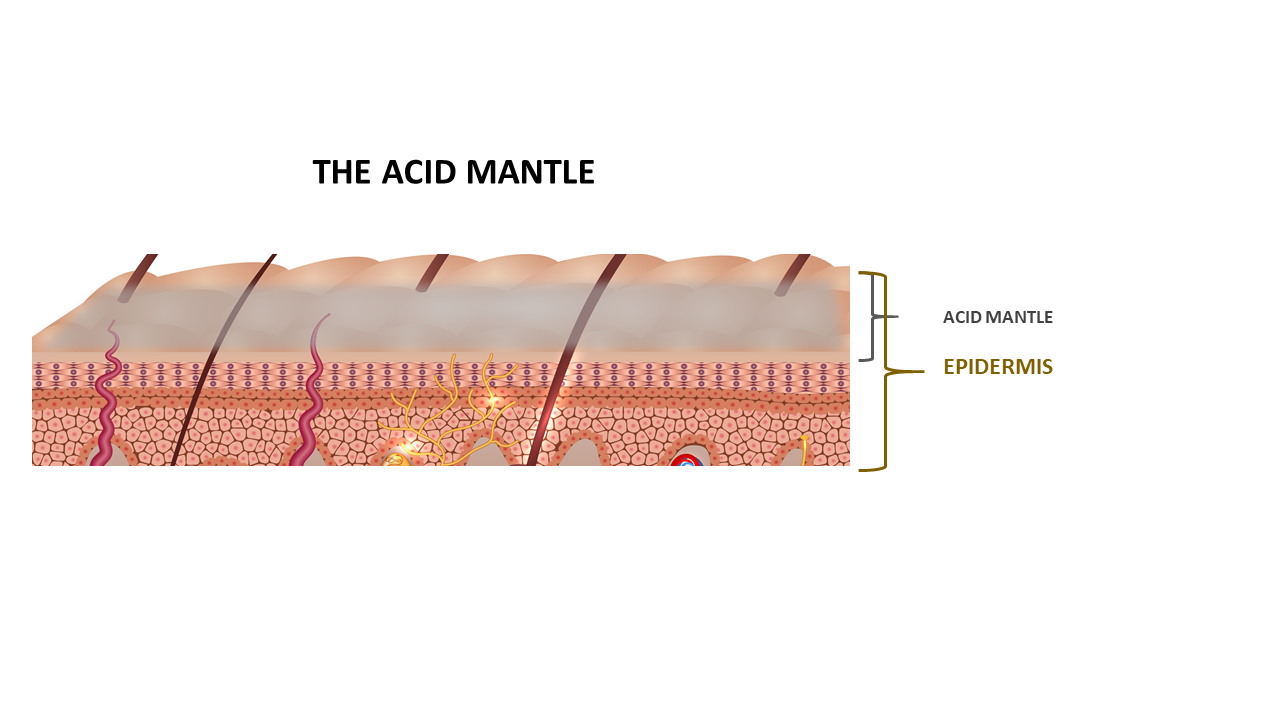Skin’s Outermost Defense Mechanisms: The Microbiome, Acid Mantle, and Lipid Layer
Written by Brenda Linday2020 will be an exciting year discovering new information and advances in several skin conditions and disorders each month. Before we proceed with individual skin conditions, we shall begin by reviewing the skin’s outermost defenses and how they can affect conditions, disorders, and potential diseases.
Many aestheticians believe that the skin’s microbiome is the same as the acid mantle. In actuality, there are three separate entities that are healthy skin’s line of defense against pathogens: the skin microbiome – also called the skin flora or skin microbiota, the acid mantle, and the lipid barrier.

The three layers work together protecting against infection, irritants, moisture loss (transepidermal water loss), and ever-present environmental aggravators, including ultraviolet radiation, pollution, and free radicals. This article demonstrates how each layer contributes to healthy skin.
THE FIRST LINE OF DEFENSE
The microbiome is an ecosystem found at the surface of the skin that acts as a crucial defense mechanism. Its genetic makeup consists of microbes – bacteria, fungi, protozoa, and viruses. The amount of genes in all the microbes in an individual’s microbiome is 200 times the number of genes in the human genetic makeup.

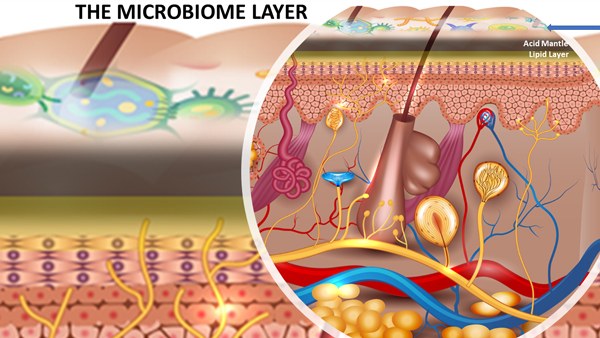
Human skin has a microbiome colonized by 10,000 to 1 million bacteria units per square centimeter.1 Most bacteria are staphylococcus or propionibacterium acnes; additionally, it houses yeasts (malassezia) and parasites (demodex mites).1 When disrupted, the microbiome’s barrier functions can fail, leading to an altered pH, infection, a decrease of antimicrobial peptides, and an increase in inflammation. Each microbiome is unique, varying with age, location on the body, and gender of the individual. A healthy microbiome that can protect against pathogens and irritants must be nourished with both pre- and probiotics.
New research has emerged showing how prebiotics can work when applied topically. Prebiotics are nutrients that help nourish and strengthen good bacteria. Plant sugars xylitol and l-rhamnose and carbohydrates like fructooligosaccharides are potent sources of prebiotics. Probiotics as in lactobacillus ferment are live, good bacteria that help promote a healthy microflora ecosystem by producing acidic compounds and reducing the pH of the skin. Caution: since probiotics are live bacteria, they are not intended for use in anyone who is immunosuppressed.
Postbiotics are chemical byproducts like antimicrobial peptides and the remaining fragments of dead bacterial cells. Antimicrobial peptides (AMPs) are part of the immune system response.2 They function similarly to potent, broad-spectrum, antibiotic killing, gram-negative and gram-positive bacteria, viruses, and fungi and have even altered cancer cells.
THE SECOND LINE OF DEFENSE
Lying directly below the microbiome, the acid mantle is a mixture of sweat, sebum, water, dead skin cells, lactic acid, urocanic acid, fatty acids, and pyrrolidine carboxylic acid, with an acidic pH between 4.5 and 5.9 to 6.2.
The acid mantle helps inhibit the growth of unhealthy bacteria, fungi, and pathogens. The combination of the acidic exterior (acid mantle) and alkaline interior (inner skin) helps the body to defend against bacteria. A note of caution: certain medications can alter the acid mantle, including antihistamines, chemotherapy drugs (like Tamoxifen), Accutane, diuretics, protease inhibitors, and statins.
THE THIRD LINE OF DEFENSE
The Lipid Barrier: The extracellular lipid matrix located in the stratum corneum is an essential component of the permeability barrier. The epidermal barrier protects the body from transepidermal water loss, and the entry of external substances. It consists of ceramides – waxy, lipid molecules formed from sphingosine and fatty acid, free fatty acids, byproducts of the metabolism of fat in adipose tissues, and cholesterol- a waxy, fat molecule made by the liver, with ceramides being the essential compound.2
Phytosphingosine and sphingolipids (ceramide precursors) help the skin make more ceramides. Lipids assist in retaining water molecules and keeping pathogens out.
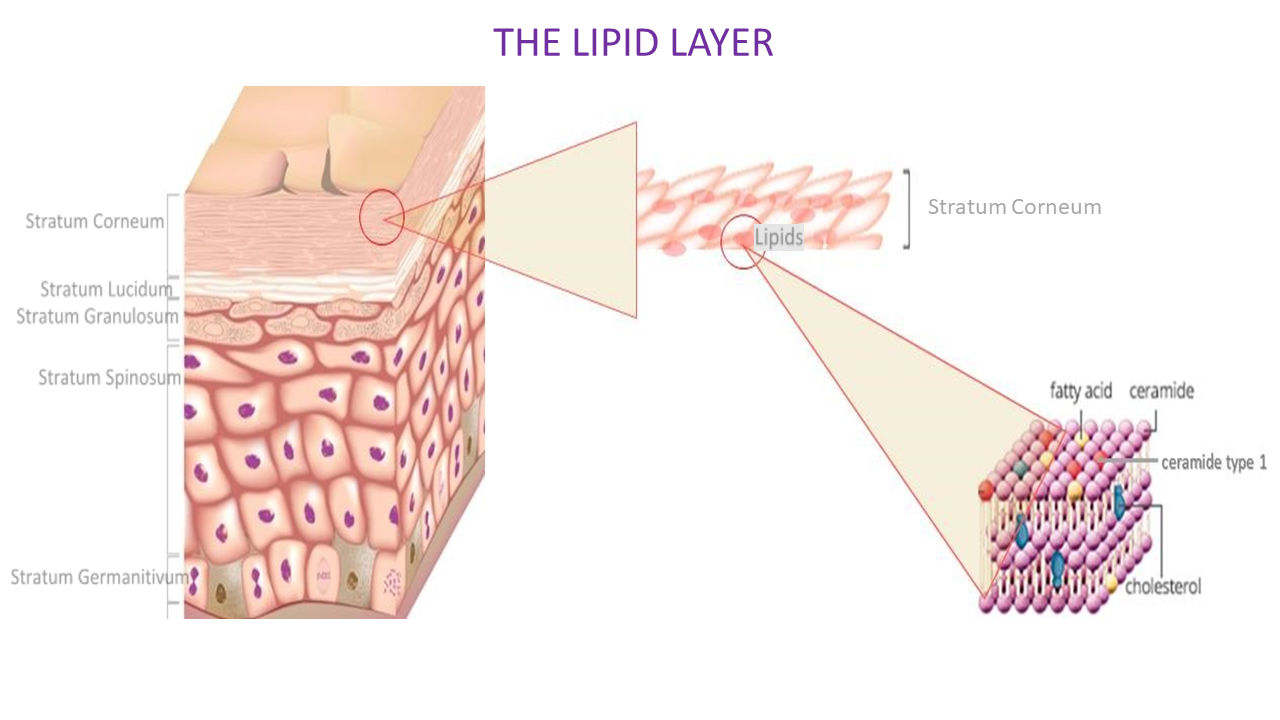
Ceramides used in skin care include:
- ceramide AP
- ceramide EOP
- ceramide NG
- ceramide NP
- ceramide NS
- phytosphingosine
- sphingosine
Ceramides work best when combined with other moisture replenishing ingredients like fatty acids and cholesterol. Lecithin is a phospholipid often used in moisturizers.
SKIN CARE USING PRE, PRO, AND POSTBIOTICS
Products using this remarkable science are still in their infancy. Exciting new advances within the microflora industry are always emerging. Studies have concluded that bifidobacterium longum increases the skin’s resistance to temperature and irritation (product-related). Streptococcus thermophilus increases the production of ceramides. Lactobacillus paracasei inhibits substance P (a neuropeptide), thereby decreasing inflammation and sebaceous activity. Enterococcus faecalis, streptococcus salivarius, and lactobacillus plantarum decrease P.acnes. Bacillus coagulans and bifidobacterium breve are antioxidants and protect against ultraviolet radiation.
STEPS FOR A HEALTHY MICROBIOME
To encourage a healthy microbiome, the following steps can help.
Chose the Correct Cleanser
Protect the microbiome by being diligent to never over-cleanse the skin. Pay close attention to ingredients used in skin care products. Use a cleanser that is lather-free, cream- or oil-based, and has an acidic pH. Avoid using antibacterial wipes, antibacterial soaps, sanitizers, and products with antimicrobial irritants (sulfates and parabens), as they eradicate all bacteria – leaving skin exposed to irritants and pathogens. Additionally, avoid:
- antihistamines, which dry out the skin
- high blood pressure medication, which can reduce sweat levels
- Accutane, which dries up oil production from the sebaceous glands
- chemotherapeutic medications, which interfere with sweat and sebum production
- diuretics, which dehydrate and reduce the body’s salt levels
- statins, which remove the skin’s natural oils
Rebalance the pH
Even a gentle cleansing can disrupt the skin’s pH. Be sure that your cleanser is pH balanced or use a toner to restore the pH. Microbiome bacteria thrive in an acidic environment of around a 5.
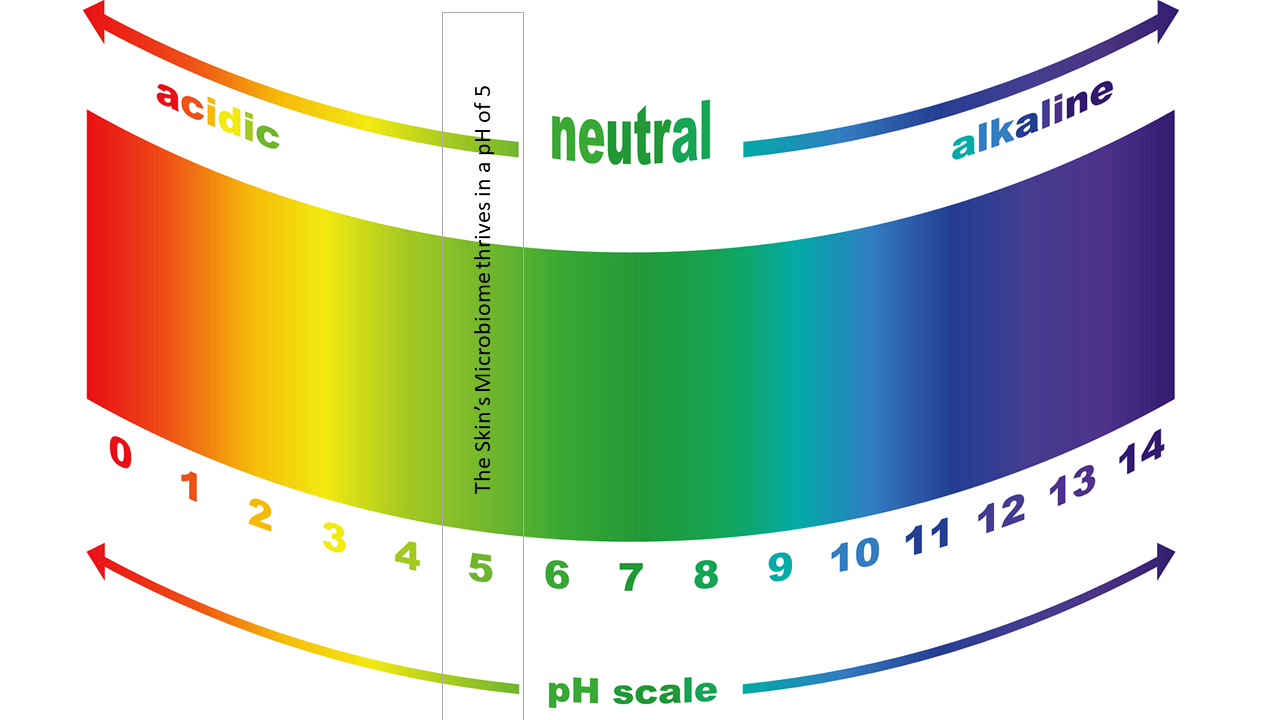
Regular Exfoliation
Dead cell buildup from an impaired desquamation process inhibits the functioning of a healthy microbiome. Use products that provide a gentle daily exfoliation or incorporate a weekly mild exfoliation with a mild alpha hydroxy acids or enzyme at-home treatment. Don’t forget to include a product that initiates a healthy cell turnover rate.
A few examples include:
- alpha hydroxy acids
- retinol
- Retin-A or retinoic acid
- retinaldehyde
- granactive retinoid
- RNF-1 peptide
- jojoba beads
- sea salt
- coffee grounds
- cornmeal
- sugar scrubs
- proteolytic (digestive) enzymes
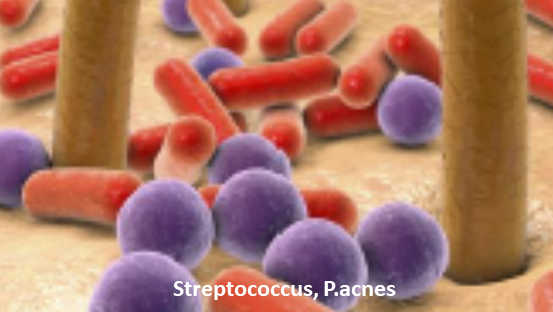
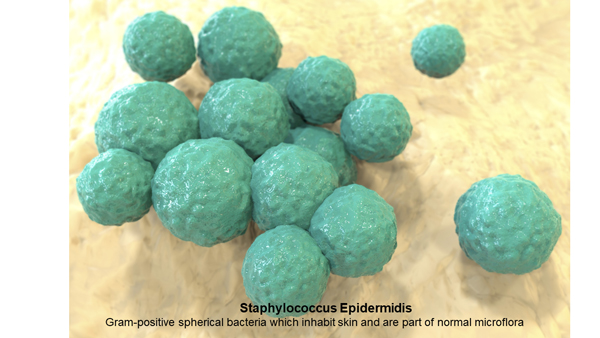
Use Pre- and Probiotics to Promote the Good Bacteria
Prebiotics include aloe vera polysaccharides, alpha-glucan oligosaccharide, and biolin.3 Probiotics that improve hydration, reduce irritation, and promote a healthy ecosystem enabling microflora to flourish include fig ferment, lemon ferment, kloeckera ferment, hansenula ferment, lactococcus ferment, bifida derment lysate, leuconostoc ferment, pediococcus ferment, lactobacillus ferment, saccharomyces lysate extract, and pichia and resveratrol ferment lysate.
Support the Skin Barrier Function
The three ingredients that help to nourish the lipid barrier are hyaluronic acid, essential fatty acids, and ceramides. Replenish and repair the skin barrier with moisturizers, ceramides, phospholipids, and botanical oils.
Protect with Sunscreen
Mineral-based sunscreen using titanium dioxide or zinc oxide creates a physical barrier to shield the skin from ultraviolet radiation, while calming inflammation.
Armed with a new awareness and updated information, you can now help to achieve and maintain your clients’ skin integrity by fostering a healthy, bacteria-rich environment.
References
1 Talakoub, Lily and Naissan O. Wesley. “Probiotic, prebiotic, and postbiotic skin care.” MDedge Dermatology. Feb 2019.
https://www.mdedge.com/dermatology/article/194433/aesthetic-dermatology/probiotic-prebiotic-and-postbiotic-skin-care.
2 Solstad, R.G., C. Li, J. Isaksson, J. Johansen, J. Svenson, K. Stensvag, and T. Haug.
“Novel Antimicrobial Peptides EeCentrocins 1, 2 and EeStrongylocin 2 from the
Edible Sea Urchin Echinus Esculentus Have 6-Br-Trp Post-Translational Modifications.” PLoS One 11, no. 3 (2016): e0151820.
3 Daniells, Stephen. “Study supports prebiotic potential of Aloe vera polysaccharides.”
NUTRA ingredients-usa.com. Nov 2017. https://www.nutraingredients-usa.com/Article/2017/11/14/Study-supports-prebiotic-potential-of-Aloe-vera-polysaccharides.

Brenda Linday, L.E., L.E.I., C.A.C., Linday Aesthetic Consulting, is a licensed aesthetician, licensed aesthetic instructor, and certified aesthetic consultant with over 15 years of experience in the medical aesthetic industry. Linday serves as a consultant for medical and aesthetic companies desiring to build strong sales and education teams. She develops clinical and sales education content and trains sales and educational teams, clinicians, physicians, and distributors around the world. Linday is also a featured author in many industry publications. Her passion is sharing her wealth of knowledge with other like-minded professionals who believe that education is the key to building lasting relationships with clients, making each clinician more successful by increasing client satisfaction. This email address is being protected from spambots. You need JavaScript enabled to view it. or @lindayconsult
